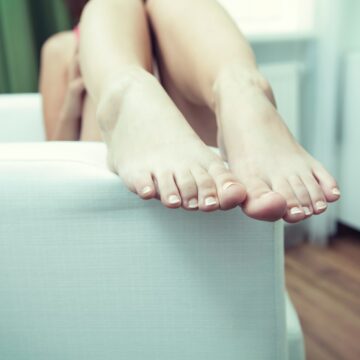
- There are various reasons for getting cold feet, in the literal sense.
- In addition to cold weather, having low levels of iron and B12 nutrients can play a role in having cold feet.
- Nerve damage resulting from elevated blood sugar levels among diabetics, also contribute to cold feet.
Many people will experience literally having cold feet at some point in their lives. While some experience it seasonally or temporarily, others deal with cold feet year-round. For some cases, it’s merely due to cold weather or nutrient deficiencies, while for others, it may be a sign of more serious health conditions that need to get checked out.
Read on and know some reasons why your feet are always cold.
Sensitivity to Cold Weather

“Cold feet can occur in winter when the body decreases blood flow to the area,” Dr. Nicholas Pantaleo, family medicine physician at WestMed Medical Group in Westchester, New York tells LIVESTRONG.com. To help deal with cold feet in this case, wearing extra-thick socks that are breathable and moisture-wicking, helps.
Vitamin Deficiency

A deficiency in iron and B12 can contribute to cold feet, according to Dr. Pantaleo. Both iron and B12 are essential nutrients for blood production. Pregnant women as well as those with GI diseases such as celiac or ulcerative colitis are more likely to experience low iron levels, per the National Institutes of Health (NIH), while those at greater risk of B12 deficiency include people who are vegetarians, pregnant or lactating, or with digestive illnesses.
If you belong to any of these groups, or are following a restricted diet, or want to know more about taking supplements, see your doctor for guidance.
Some Circulatory Diseases

“Some diseases that can cause poor circulation include diabetes, obesity and Raynaud’s, a condition that causes blood vessels to spasm,” explains Dr. Pantaleo.
One symptom of poor circulation is skin discoloration. For example, in Raynaud’s, the skin in your finger and toes may change to white or blue, the Arthritis Foundation says. If you’re diagnosed with Raynaud’s, recommended treatment may include calcium channel blockers that work to keep the blood vessels open.
Possible Nerve Damage
Having uncontrollable blood sugar levels can result in nerve damage, also called diabetic neuropathy. Dr. Pantaleo says numbness and tingling are often experienced due to damaged nerves failing to transmit messages to various parts of the body, per the Center for Disease Control and Prevention (CDC).
Because data shows that nerve damage is reported in 50% of people with diabetes, Dr. Pantaleo suggests people with diabetes should work with their doctor in managing their blood sugar.
Thyroid Disease

Being intolerant to cold is a major symptom of an underactive thyroid, also called hypothyroidism. If you think a thyroid condition is what’s causing your feet to be perpetually cold, then see your doctor. They may require blood tests to assess your thyroid function.
You’re Taking a Beta-Blocker
Beta-blockers are prescribed medications for reducing blood pressure and slowing down the heart, per the Mayo Clinic. “When this occurs, it can affect the circulation in the body, especially to extremities like hands and feet,” Dr. Pantaleo says.
Among the common side effects of beta-blockers include cold hands and feet, fatigue and weight gain. If symptoms become annoying, consult your doctor about taking other alternative medications or other ways to manage these side effects.
Tobacco use

Lighting up compresses blood vessels, causing toes and even fingers to be generally cold, says Dr. Pantaleo. Smoking is also associated with Buerger’s disease, a condition involving clot formation in blood vessels, limiting blood flow to certain areas of the body and irritating blood vessels, per the CDC. Smoking cessation is the only way to prevent tissue damage and pain problems from Buerger’s.
How to Fight the Freeze

Aside from wearing slippers, another way of keeping your feet warm is simply getting active.
“You can try moving your feet and legs back and forth to help recirculate blood in your extremities,” Dr. Pantaleo says. Clenching and unclenching your toes, or massaging your feet, also helps encourage good circulation.
However, if these don’t help bring back the color of your feet or toes, then go see your doctor, Dr. Pantaleo suggests.
Via Live Strong

